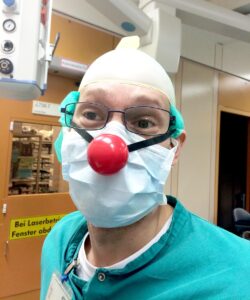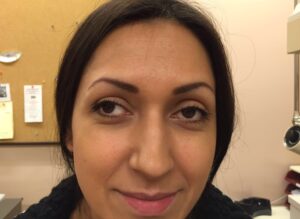Strabismus (squint or crossed eyes) is caused by an imbalance of eye muscles that leads to a deviation (misalignment) in the direction of increased muscle tension. It may also be caused by a fusion insufficiency: the separate and slightly different images received from the two eyes cannot be fused into an overlaped single image in the brain.
There are many different forms of strabismus, the causes are different in children and adults.
In children, the image of the squinting eye is suppressed by the brain, which can lead to functional visual impairment (amblyopia) and a lifelong impairment of three-dimensional vision. This is why cross-eyed babies and children need to be treated as early as possible. The therapy is individual and is tailored to the form of strabismus, age and symptoms.
Steps of a professional strabismus management
- Prescription of glasses based on the result of retinoscopy in cycloplegia (dilation of the pupil) in order to correct the refractive error (farsightedness, nearsightedness or astigmatism). The most optimal glasses should be worn permanently! In many cases, the squint angle will be reduced or even completely compensated.
- Occlusion treatment: covering the better seeing eye in order to train the squinting eye with poor vision.

During the surgery, caregivers wear a clown nose to cheer up the children. - Strabismus surgery: only in selected cases if the strabismus cannot be corrected by wearing glasses and/or occlusion treatment and the strabismus angle is stable. Strabismus surgery is possible at any age, but it does not replace correction with glasses or occlusion.
Goal: Improvement of functional eye alignment by restoring the normal eye muscle balance.
A strabismus surgery is performed under general anesthesia, under a surgical microscope. The conjunctiva is opened with a “mini incision” over the tendon insertions. Then the eye muscles that are pulling too strong are repositioned and the eye muscles that are too weak are strengthened by folding. By changing the muscle power, the eye position changes. As nothing is cut away from the muscles, the procedure can be reversed at any time.


